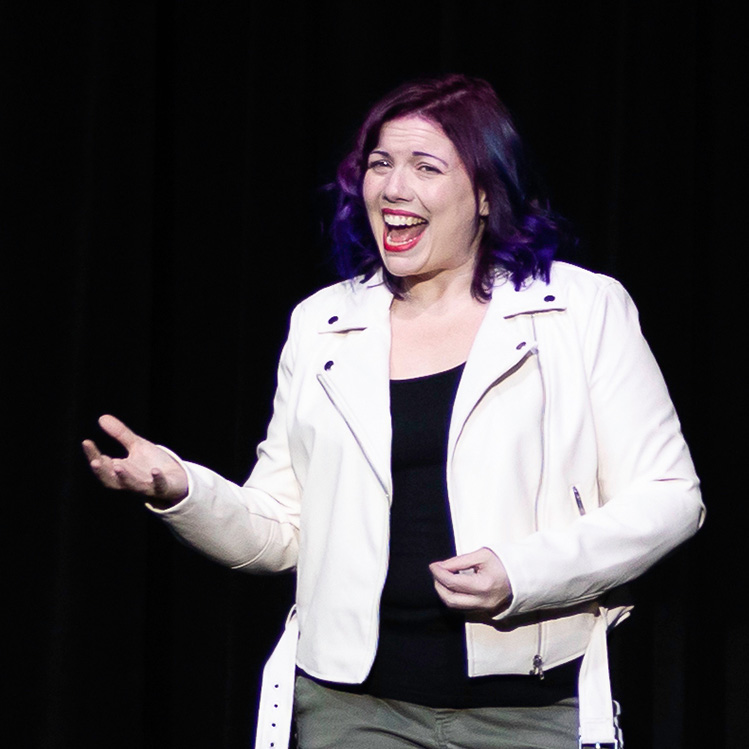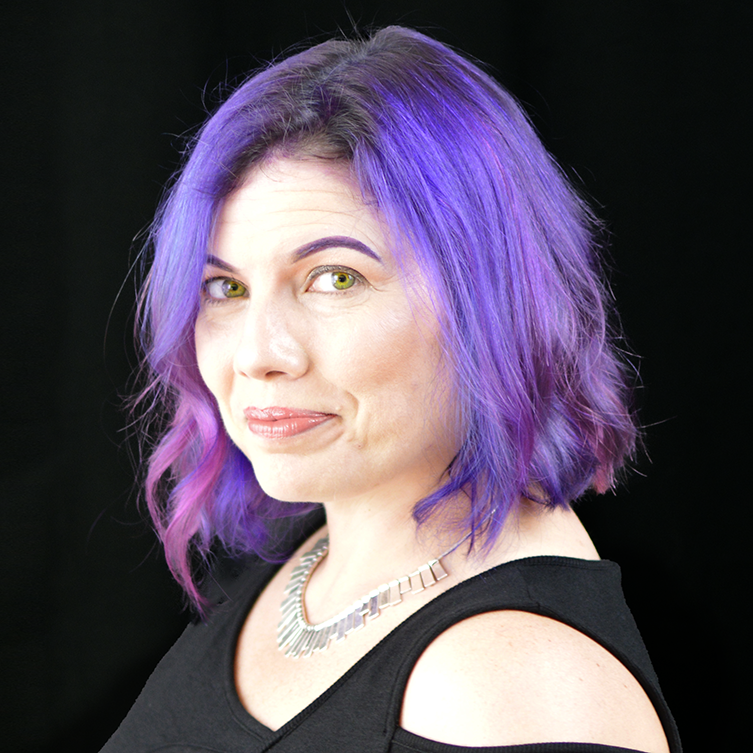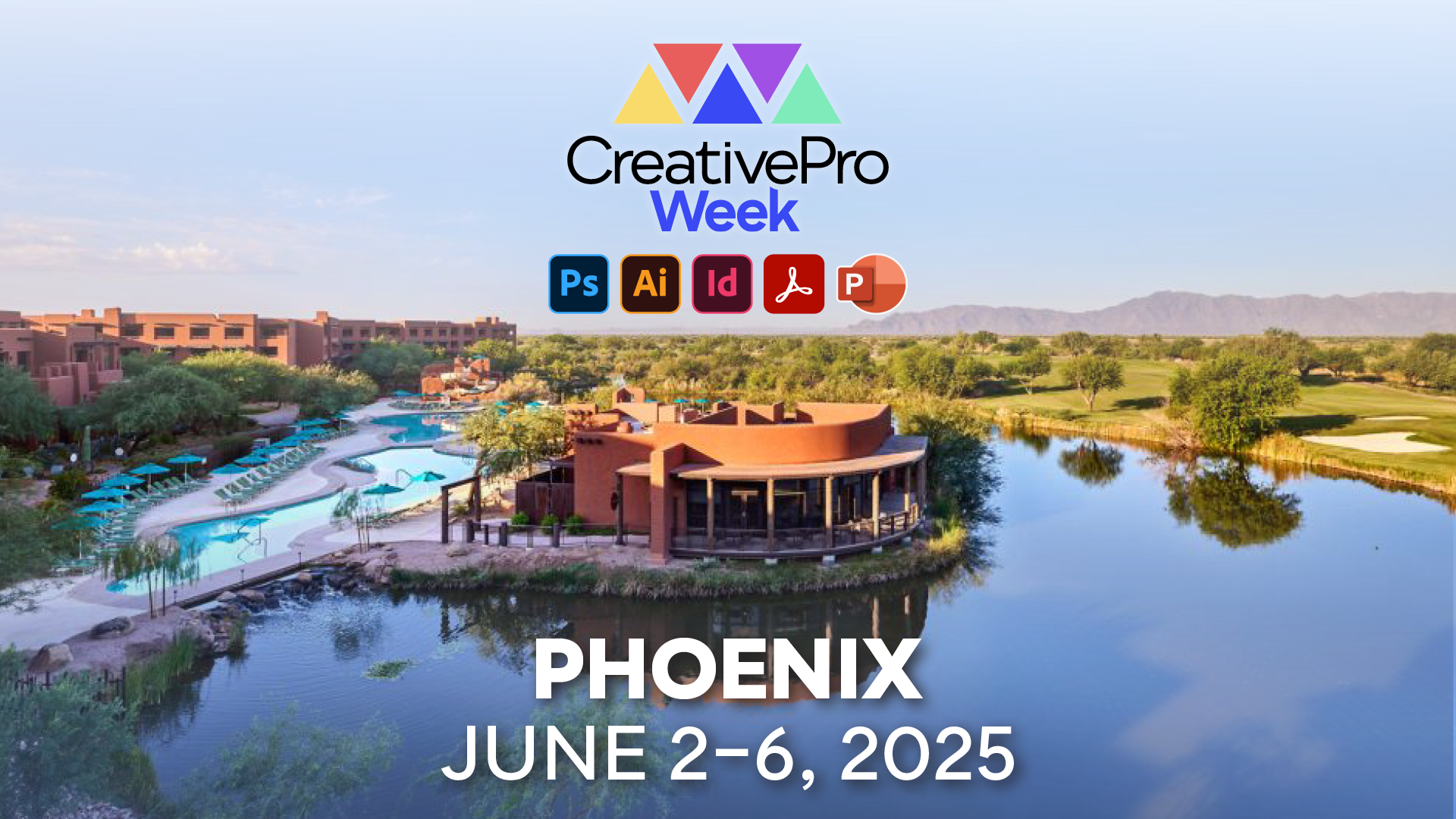This month, Mike Parkinson spoke about AI with GhostRanch Communications on their Presentation Thinking™ podcast.…

I first met a bright-eyed Stephy Hogan at the Presentation Summit almost a decade ago. That first year, she attended the conference to hone her presentation design skills and learn more about the industry. Soon after, she was sharing the stage with veteran presenters to teach PowerPoint tricks. Now she is becoming a leader in the presentation industry and sharing her PowerPoint design techniques with the world. Through her YouTube channels and website, she gives presentation and speaker tips and teaches about accessible design to new and seasoned presentation designers.
I am so thrilled for Stephy’s new projects, and I wanted to highlight her on the Billion Dollar Graphics blog for our readers to discover.
________________________________
1. How did you become a presentation designer and speaker?
How I became a presentation designer? HA! I was dragged kicking and screaming into the role. I was acting as a graphic designer, completely in love with my Adobe tools, when I went on maternity leave with my first kid. When I came back 3 months later, my boss told me that they rearranged the team and that I was a lead designer! Yay! But I was leading the PRESENTATION team. I had to work in PowerPoint almost exclusively. It was a high and a low all in one moment. And the presentations people were sending me! OH. MY. GOD. They were horrible. So I started to get more involved in their stories, because how can I design an effective visual if I have no idea what they’re talking about or who they’re talking to, right? Once I became more consultative, it became more fun and engaging. I quickly learned that PowerPoint was actually pretty awesome, and that I can’t blame the tool I’m working with.
I started speaking by throwing my hat in the ring, so to speak, at the Presentation Summit—where all the people I admired spoke. I felt like I was a kindergartener asking to paint with Michaelangelo. But I was selected to speak! I started talking about general presentation tips—shortcuts, designing under deadlines, and a little data vis.
Then I stumbled into accessibility—that 508 compliance guidelines here in the U.S. I came around to it in a weird way as well. I’m also a UX designer, and it became the focus of my day job in 2019. One day, I was auditing how the company brand was being used on their website and discovered that the colors were horrible! Not in an I-don’t-like-green way, but in an I-can’t-read-that-text-because-of-the-colors way. That triggered a memory of our recent all hands meeting where the presentation was projected onto a screen, and no one could read the very large text simply because of the color being used. That’s when I started my crusade against inaccessible presentation design, and I’ve been speaking on it ever since.
2. You recently launched a website, Presentation Workshop, to teach presenting tips on a variety of topics. What do you believe most new presentation designers struggle with?
Great question. First of all, if they are design snobs like I was in the beginning of my career, then they’re struggling with just having to use PowerPoint—known for churning out monstrosities that have tortured audiences across the world. They’re struggling against their own mindset. But if they are exposed to the amazing presentations that people in our industry have created in PowerPoint, they’ll quickly get over that belief.
Also, many newbies don’t realize what skills the best presentation designers need: the ability to create an experience where the speaker connects with their audience in a tangible way. Honing this skill requires a lot of communication, questions, trust building, and humble confidence when interacting with their speakers.
3. In March you are delivering the session Making Accessible PowerPoint Documents for CreativePro’s The Design + PowerPoint Summit. Before accessibility and inclusivity became industry standards, you had always advocated for more inclusive and accessible documents, websites, presentations, and marketing materials. What does it mean to create accessible documents? What is the best tip or resource that can help presenters ensure their presentations are accessible and inclusive?
Empathy. Empathy. Empathy. Part of being an experience designer (and that’s what presentation designers ARE) is advocating on behalf of your audience. When you create something that is accessible, you’re making sure that every audience member gets an equally awesome experience whether they’re visually-impaired, Deaf, cognitively-impaired, are viewing a presentation over a crappy connection, or are exhausted from staying up all night with their sick pets. You’re not creating the SAME experience … just equally amazing ones. And you do it through various design and writing techniques that are mostly all of the things we push for when designing nice slides! If a presentation designer were to study up on WCAG (web content accessibility guidelines) guidelines (yes, I wrote guidelines a lot there), and combined that with a healthy dose of empathy? They’ll become indispensable. But WCAG gets REALLY boring REALLY fast. But the videos at Accessible Design Lab on YouTube should help with that.
__________________
Bio
 Stephy is 2 parts designer, 2 parts developer, 3 parts perfectionist, and 1 part impatient mother. She’s a founding board member of the Presentation Guild board of directors, is a design engineer by day, runs her own business by night, barely plays guitar, and loves glitter. Once, she drove through a tire fire on a golf cart at work when she was a chemist. Now she enjoys making typically mundane experiences a lot more fun–like sitting through an 80-slide benefits presentation, dealing with that really crappy website, or reading this bio.
Stephy is 2 parts designer, 2 parts developer, 3 parts perfectionist, and 1 part impatient mother. She’s a founding board member of the Presentation Guild board of directors, is a design engineer by day, runs her own business by night, barely plays guitar, and loves glitter. Once, she drove through a tire fire on a golf cart at work when she was a chemist. Now she enjoys making typically mundane experiences a lot more fun–like sitting through an 80-slide benefits presentation, dealing with that really crappy website, or reading this bio.
Stephy Hogan is an accessible design expert who has been working in the design field for more than 20 years. She is an accessible design advocate at IBM, has created the Accessible Design Lab channel on YouTube, and is a frequent podcast guest and keynote speaker—including at the Creative Pro Network and Presentation Summit.
As an ADHDer herself, her experience as a neurodiverse designer has driven her passion and purpose to get more people interested and involved in accessible design initiatives.


